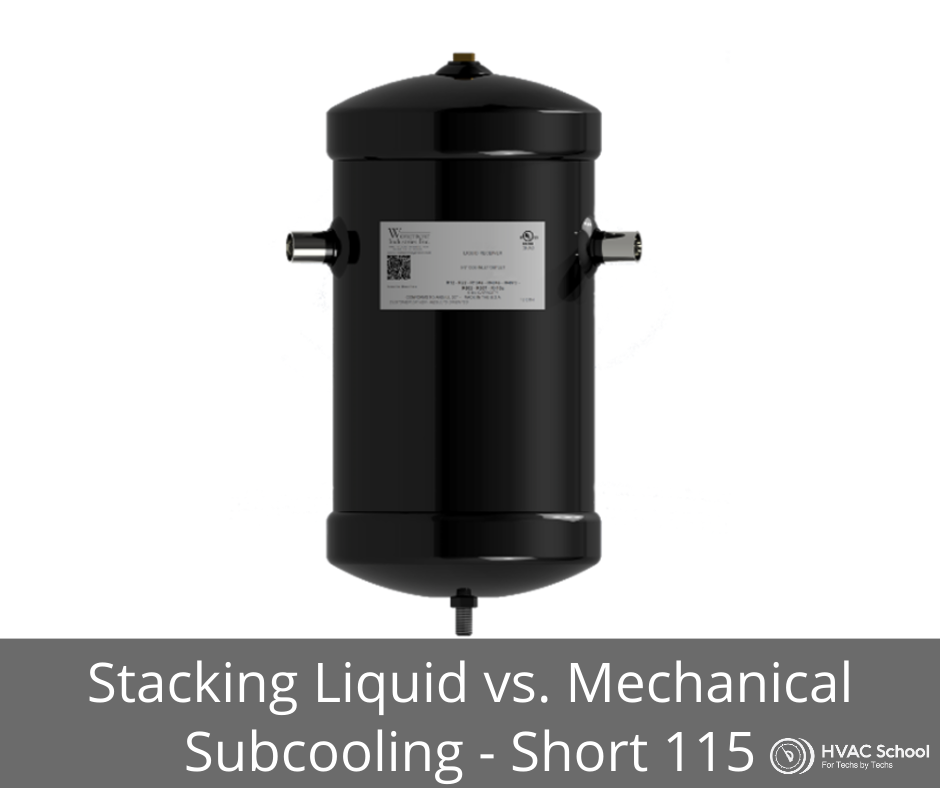Stacking Liquid vs. Mechanical Subcooling – Short 115

In this short podcast episode, Bryan compares strategies for increasing the subcooling, including stacking liquid and mechanical subcooling.
Subcooling is a consequence of condensing; when we change the refrigerant from a vapor to a liquid, it will drop below saturation temperature after it becomes completely liquid. There are three phases in the condenser: desuperheating, condensing, and subcooling. The first few rows of the coil reduce the superheat of the vapor entering the condenser. Once there is no more superheat, heat rejection helps the saturated refrigerant transform into a liquid entirely. Near the end of the coil, liquid refrigerant can keep losing heat, and it becomes subcooled.
We can only achieve subcooling by stacking liquid in the condenser. When you stack liquid in the condenser, it can give off its heat to the outdoor air. However, too much subcooling isn't necessarily a good thing. Your condensing temperature should be above the outdoor temperature; we call this value the condensing temperature over ambient (CTOA). When your condensing temperature is too close to the ambient temperature, you won't get much heat rejection.
If your subcooling goes up because you're stacking too much liquid, you'll drive up your CTOA and head pressure. If you increase your head pressure, you'll increase your compression ratio. Your efficiency will suffer. So, when stacking liquid, you'll want to find a happy medium. However, in systems with liquid receivers, you may not see much liquid stacking at all.
Getting some extra subcooling can boost your system capacity. We have some mechanical subcooling devices that use heat exchangers to drop the temperature of the refrigerant in the liquid line. That way, the refrigerant can absorb more heat when it's in the evaporator coil.
Learn more about Refrigeration Technologies HERE.
If you have an iPhone, subscribe to the podcast HERE, and if you have an Android phone, subscribe HERE.
Author:









Comments
To leave a comment, you need to log in.
Log In